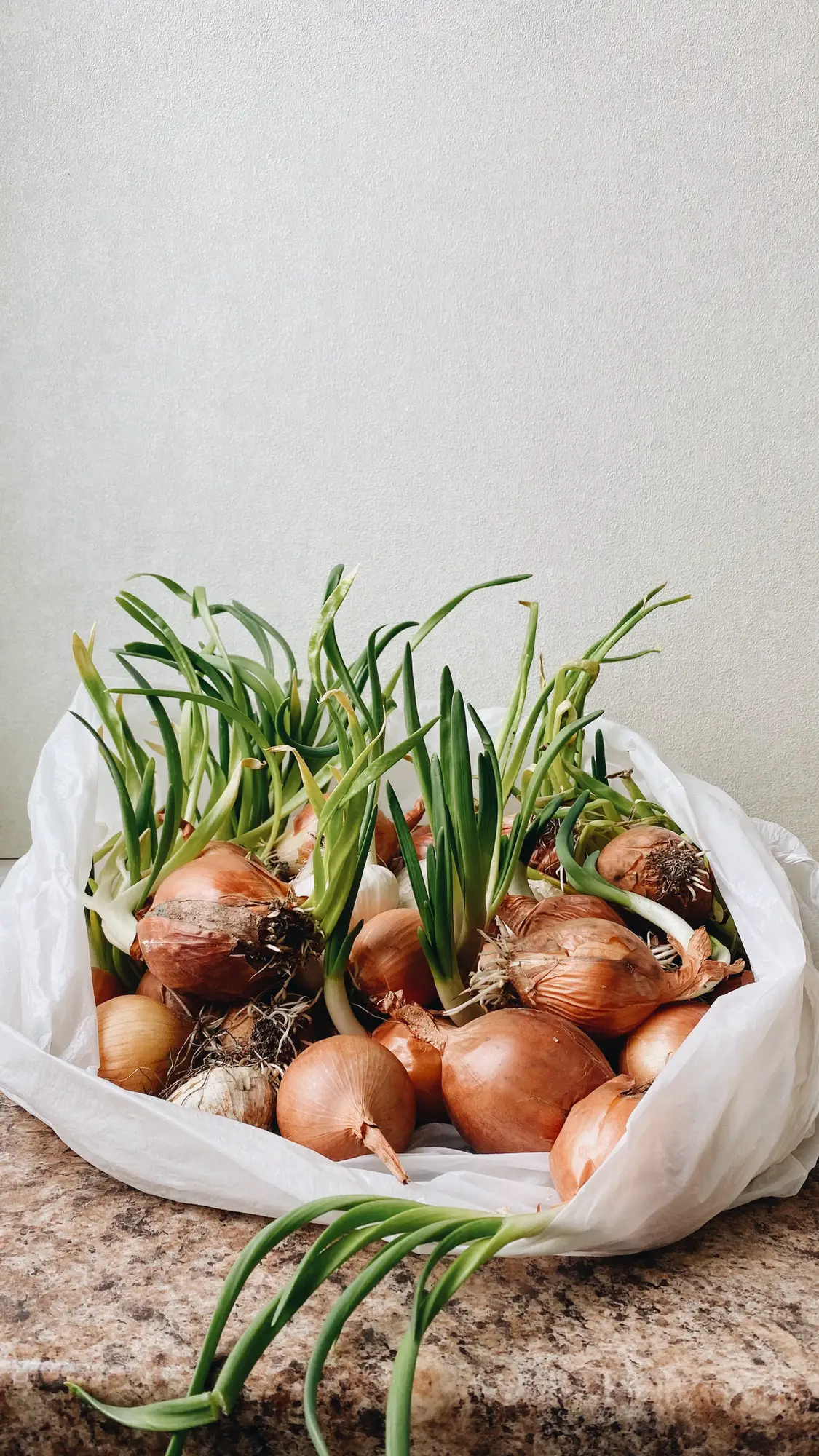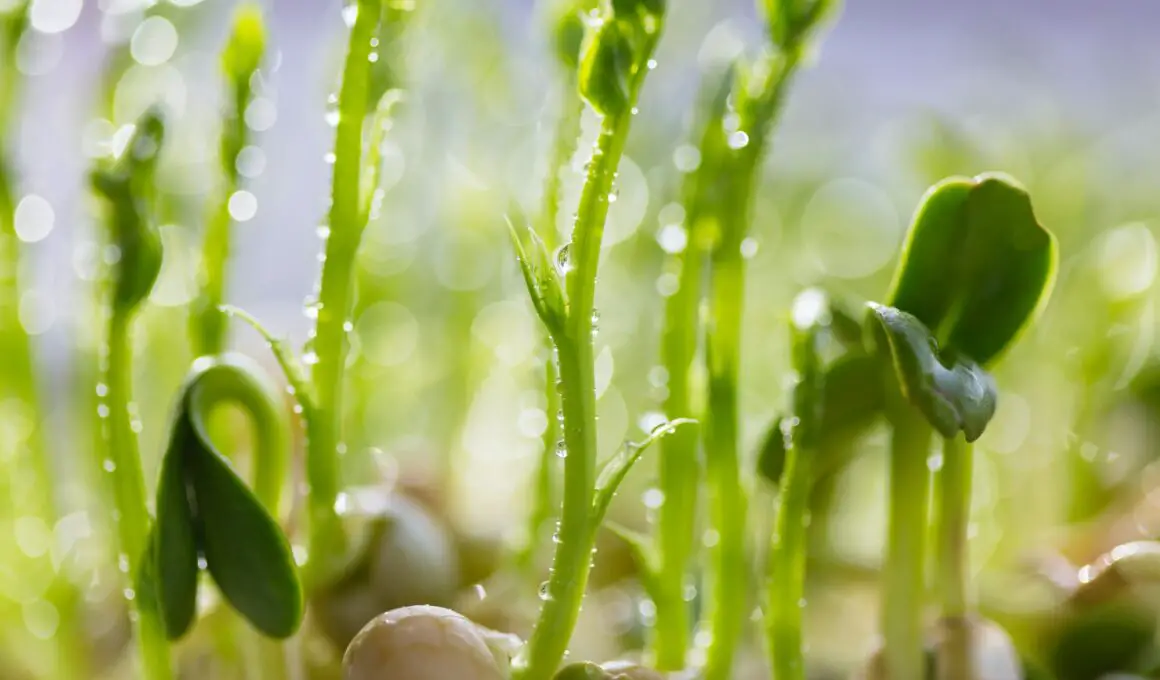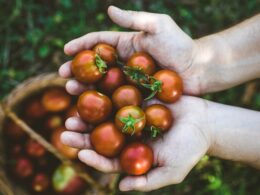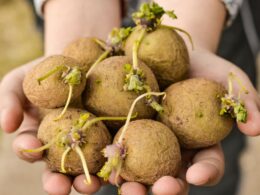In This Article Show
If you’ve ever stored onions for an extended period, chances are you’ve encountered those pesky sprouts. As a seasoned gardener with over 13 years of experience, I know firsthand the curiosity that arises when you see those little green shoots emerging from your onions. Today, we’re going to address a common question among gardeners: Can sprouting onions be planted?
Now, you might be wondering if these sprouted onions are still safe to eat. Rest assured, sprouted onions are generally safe, albeit with some changes in taste and texture. However, today’s focus isn’t on culinary uses, but rather on their potential as planting material.
So, can you plant sprouting onions? Let’s find out together as we explore the ins and outs of planting these resilient veggies. Whether you’re a novice gardener or a seasoned pro, this guide will equip you with the knowledge to make the most out of your sprouting onions. Let’s get started!
Can Sprouting Onions Be Planted?
Yes, sprouting onions can be planted. When onions sprout, it’s a natural process indicating their readiness for planting. You can select sprouted onions, prepare the planting area with well-draining soil, and follow simple steps to plant and care for them. With the right conditions, you can grow healthy onions from sprouted bulbs in your garden.
Planting Sprouted Onions

Conditions for Planting Sprouted Onions
Before you embark on planting sprouted onions, it’s essential to ensure that you have the right conditions in place to encourage healthy growth. Here’s what you need to consider:
1. Soil
Get Gardening For Beginners
Our new EBOOK shows newcomers and green thumbs alike a step by step guide to growing the garden of their dreams.
Opt for well-draining soil that is rich in organic matter. Onions thrive in loose, fertile soil that allows for proper root development.
2. Sunlight
Choose a location that receives full sunlight for at least six to eight hours a day. Adequate sunlight is crucial for the photosynthesis process, which provides the energy needed for plant growth.
3. Temperature
Onions prefer moderate temperatures between 55°F to 75°F (13°C to 24°C). Avoid planting them in areas prone to extreme heat or cold, as it can stunt their growth.
4. Watering
Maintain consistent moisture levels in the soil, ensuring that it remains evenly moist but not waterlogged. Avoid overwatering, as this can lead to rotting of the roots.
Get Gardening For Beginners
Our new EBOOK shows newcomers and green thumbs alike a step by step guide to growing the garden of their dreams.
Steps to Planting Sprouted Onions
Now that you’ve ensured the right conditions for planting, let’s dive into the steps involved in planting sprouted onions:
Planting Process
- Dig shallow trenches in the soil, spaced approximately 4 to 6 inches (10 to 15 cm) apart.
- Place the sprouted onions in the trenches, ensuring that the sprouts are facing upward.
- Cover the onions with soil, leaving the tops of the sprouts exposed.
- Space rows of onions approximately 12 to 18 inches (30 to 45 cm) apart to allow for proper airflow and growth.
Caring for Sprouted Onions
- Water the onions regularly, providing enough moisture to keep the soil consistently moist but not waterlogged.
- Mulch around the base of the onions to help retain moisture and suppress weed growth.
- Monitor the plants for signs of pests or diseases, and take appropriate measures to control them if necessary.
- As the onions continue to grow, consider thinning them out to ensure adequate spacing and allow for larger bulb development.
By following these steps and providing the right conditions, you can successfully plant sprouted onions and enjoy a bountiful harvest of fresh, flavorful bulbs.
Tips for Successful Onion Sprouting
1. Ideal Soil Conditions
- pH Level: Onions prefer slightly acidic soil with a pH level between 6.0 and 7.0. Test your soil and amend it accordingly with lime to raise pH or sulfur to lower pH if necessary.
- Soil Texture: Ensure that the soil is loose, well-draining, and rich in organic matter. Incorporating compost or aged manure into the soil can improve its texture and fertility, providing the ideal growing environment for onions.
- Fertilization: Before planting, apply a balanced fertilizer with a higher phosphorus content to promote root development.
2. Proper Watering Techniques

1. Consistent Moisture
Onions require consistent moisture throughout the growing season, especially during bulb formation. Water the plants deeply but infrequently to encourage strong root growth and prevent shallow rooting.
2. Avoid Overwatering
Onions are susceptible to rotting if the soil is waterlogged. Monitor soil moisture levels regularly and adjust watering frequency based on weather conditions and soil moisture.
3. Watering Time
Water onions in the morning to allow foliage to dry before evening, reducing the risk of fungal diseases such as onion rot.
3. Managing Pests and Diseases
1. Pest Prevention
Keep an eye out for common onion pests such as onion thrips, onion maggots, and aphids. Use row covers or insecticidal soap to deter pests and minimize damage to the plants.
2. Disease Prevention
Practice crop rotation to reduce the risk of soil-borne diseases such as onion white rot and damping-off. Ensure good air circulation around the plants by spacing them properly and avoiding overcrowding.
3. Organic Controls
Consider using organic methods such as neem oil or garlic spray to control pests and diseases while minimizing environmental impact.
4. Harvesting Sprouted Onions
1. Timing
Harvest sprouted onions when the tops have turned yellow and begun to dry out. Avoid harvesting too early, as immature bulbs may not store well.
2. Lift and Cure
Carefully lift the onions from the soil using a garden fork or shovel, taking care not to damage the bulbs. Allow the onions to cure in a warm, dry location with good air circulation for 2–3 weeks to promote proper drying and curing.
3. Storage
Once cured, trim the tops and roots of the onions and store them in a cool, dry place with adequate ventilation. Properly cured onions can be stored for several months, providing a steady supply of fresh onions throughout the year.
By following these tips, you can ensure successful onion sprouting and enjoy a plentiful harvest of flavorful, homegrown onions.










